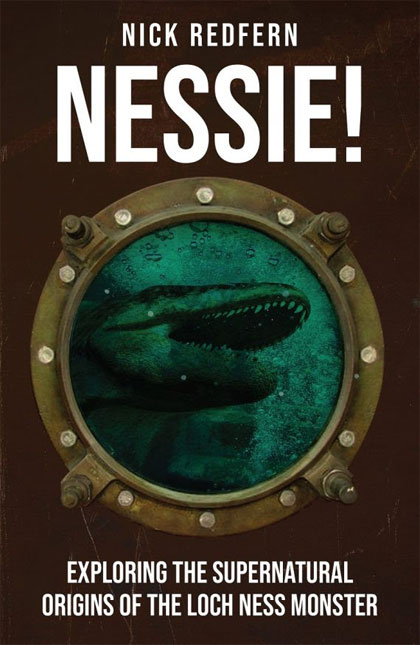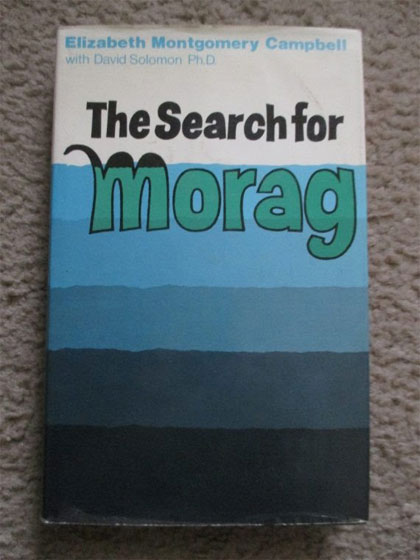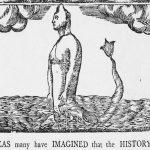
Some of the World’s Lake Monsters That You May Not Have Heard Of
Nick Redfern October 23, 2021
Over the last couple of days I’ve written articles on two of the most controversial creatures of Cryptozoology: mysterious apes and equally mysterious flying winged-monsters. The ones I chose to pick were the lesser-known ones. There is, however, another category of beast that’s worth looking at. That’s the lake-monsters of our world. So, with that said, you can guess what today’s feature is about. That’s right: the lesser-known (far less, in fact!) creatures of our lakes. Forget Nessie. Forget Ogopogo. And, forget Champ, too. Here are the ones you probably haven’t heard of. But, that are definitely worth addressing – as you’ll see right now. Although far less well known than its counterpart in Loch Ness, Scotland, the mysterious beast of Lake Storjson, Sweden, has been seen on far more than a few occasions. The late cryptozoologist, Mark Chorvinsky, said to me in an email, more than a few years ago number of years ago: “Fisheries officer Ragnar Björks, 73, was out checking fishing permits on Sweden’s Lake Storsjön when he had the fright of his life. From the placid waters a huge tail suddenly broke the surface near Björk’s 12 foot row boat. The colossal creature attached to the tail appeared to be 18 feet long, grey-brown on top with a yellow underbelly. When Björks was alongside the monster, he struck at it with his oar, hitting it on the back. Angered, the creature slapped the water with its tail and the rowboat was thrown nine to twelve feet into the air. ‘At first I didn’t believe that there was any monster in the Storsjön…but now I am convinced.’
 Chorvinsky said to me: “Does Nessie have a relative in Lake Storsjön in the mountains of Northern Sweden? A large unknown creature has been seen in the lake for over 350 years. Since 1987 the Society for Investigating the Great Lake has collected some 400 reports of “Storsjöodjuret,” as the Swedes call the monster. There is no clear picture of the beastie. Some witnesses describe a large neck undulating back and forth that looks like a horse’s mane; others observed a large wormlike creature with recognizable ears. Reports of the creature”s size range from 10 to 42 feet in length. Like the Loch Ness Monster, one of the numerous theories is that during the Ice Age 15,000 years ago, the monster may have become trapped in the Swedish Lake.”
Chorvinsky said to me: “Does Nessie have a relative in Lake Storsjön in the mountains of Northern Sweden? A large unknown creature has been seen in the lake for over 350 years. Since 1987 the Society for Investigating the Great Lake has collected some 400 reports of “Storsjöodjuret,” as the Swedes call the monster. There is no clear picture of the beastie. Some witnesses describe a large neck undulating back and forth that looks like a horse’s mane; others observed a large wormlike creature with recognizable ears. Reports of the creature”s size range from 10 to 42 feet in length. Like the Loch Ness Monster, one of the numerous theories is that during the Ice Age 15,000 years ago, the monster may have become trapped in the Swedish Lake.”
Make mention of Scottish lake monsters to most people and it will inevitably conjure up imagery of the world’s most famous unknown water beast, the Loch Ness Monster. It’s a little known fact, however, that there are more than a few Scottish lakes with legends of diabolical creatures attached to them. While many of the stories are decidedly fragmentary in nature, one of them is not. Welcome to the world of Morag, the resident beasty of Loch Morar. It’s a creature that very much resembles the Nessies of Loch Ness. Indeed, and in all likely, they are the same type of creature. After all, what are the chances of there being more than one type of monster in Scotland’s lakes! At just over eleven and a half miles in length, it has the distinction of being the deepest body of freshwater in the British Isles, with a depth of just over 1,000 feet. Unlike Loch Ness, the water of which is almost black, Loch Morar can boast of having practically clear water. It takes its name from the village of Morar, which is situated close by and specifically at the western side of the loch, and which was the site of the Battle of Morar – a violent, death-filled confrontation between the Mackenzie and MacDonell clans.
 As for the monster, Morag (or, more likely, the Morags), the tales are many. What makes them so different to the ones coming out of Loch Ness, however, is not the descriptions of the creatures, but that such reports are often hard to uncover. Unlike Loch Ness, Loch Morar is an isolated, seldom visited loch. It is bereft of much in the way of a large population, and not particularly easy to access. The result is that tourists to Scotland very rarely visit it. The same goes for native Scots, too! For that reason, just like Las Vegas, what happens at Loch Morar is very often destined to stay there. Nevertheless, there are enough classic cases on record to strongly suggest strange things lurk in Loch Morar. Now, onto England’s Bownessie.
As for the monster, Morag (or, more likely, the Morags), the tales are many. What makes them so different to the ones coming out of Loch Ness, however, is not the descriptions of the creatures, but that such reports are often hard to uncover. Unlike Loch Ness, Loch Morar is an isolated, seldom visited loch. It is bereft of much in the way of a large population, and not particularly easy to access. The result is that tourists to Scotland very rarely visit it. The same goes for native Scots, too! For that reason, just like Las Vegas, what happens at Loch Morar is very often destined to stay there. Nevertheless, there are enough classic cases on record to strongly suggest strange things lurk in Loch Morar. Now, onto England’s Bownessie.
A resident of Lake Windermere, England, Bownessie was hardly ever heard of before 2006. In terms of the publicity stakes, however, it has certainly done a great job in catching up. As for Lake Windermere itself, Britannica.com state the following: “The lake is 10.5 miles (17 km) long and 1 mile (1.6 km) wide and has an area of 6 square miles (16 square km). It lies in two basins separated by a group of islands opposite the town of Bowness on the eastern shore and is drained by the River Leven. Part of Lake District National Park, Windermere is a popular tourist center with facilities for yachting and steamers operating in the summer.” As the above data demonstrates, Lake Windermere is much smaller than Loch Ness; yet, that has not stopped a mysterious creature from appearing in its depths, which extend to 219-feet at their deepest. Now, with that all said, let us take a look at the saga of Bownessie and how and why it has become a monster of the modern era. One of the first people to have encountered Bownessie was a journalist named Steve Burnip, who saw the creature in 2006. He said of his close encounter of the monstrous type: “I saw a straight line of broken water with three humps. It was about twenty feet long and it went in a straight line up the lake. I nudged my wife and watched open-mouthed as it gradually faded from sight. The water was not choppy, so I know it wasn’t the wind, and I know what the wake from motor boats looks like and it wasn’t that either.”
 Now, let’s take a look at Big Wally – the lake-monster with the least hair-raising name of all! On November 5, 1885, the Wallowa Chieftain newspaper ran an article on its resident monster, which has been given the distinctly non-monstrous name of “Big Wally.” It is said to dwell in Wallowa Lake, Oregon, an approximately fifty-one square-mile body of water with a depth of around 300 feet. The article states: “A prospector, who refuses to give his name to the public, was coming down from the south end of the lake on last Friday evening in a skiff shortly after dusk, when about midway of the lake he saw an animal about fifty yards to the right of the boat, rear its head and neck up out of the water ten or twelve feet, but on setting him it immediately dived. He ceased rowing and gazed around in astonishment, for the strange apparition which he had just seen, when it raised about the same distance to the left, this lime giving a low bellow something like that of a cow. It also brought its body to the surface, which the prospector avers was one hundred feet in length. The monster glided along in sight for several hundred yards. It was too dark to see the animal distinctly, but it seemed to have a large, flat head, something like that of a hippopotamus, and its neck, which was about ten feet in length, was as large around as a man’s body.”
Now, let’s take a look at Big Wally – the lake-monster with the least hair-raising name of all! On November 5, 1885, the Wallowa Chieftain newspaper ran an article on its resident monster, which has been given the distinctly non-monstrous name of “Big Wally.” It is said to dwell in Wallowa Lake, Oregon, an approximately fifty-one square-mile body of water with a depth of around 300 feet. The article states: “A prospector, who refuses to give his name to the public, was coming down from the south end of the lake on last Friday evening in a skiff shortly after dusk, when about midway of the lake he saw an animal about fifty yards to the right of the boat, rear its head and neck up out of the water ten or twelve feet, but on setting him it immediately dived. He ceased rowing and gazed around in astonishment, for the strange apparition which he had just seen, when it raised about the same distance to the left, this lime giving a low bellow something like that of a cow. It also brought its body to the surface, which the prospector avers was one hundred feet in length. The monster glided along in sight for several hundred yards. It was too dark to see the animal distinctly, but it seemed to have a large, flat head, something like that of a hippopotamus, and its neck, which was about ten feet in length, was as large around as a man’s body.”
The story continues: “Now this story may have been coined in the imagination of the narrator, but he was very earnest in his recital. However, it is a known fact that there is a tradition among the Indians that the lake has a big sea cow in it, which on one occasion, many years ago, came up one evening and swallowed a young warrior and his dusky bride as they were gliding over the surface of the lake in a canoe. And to this day an Indian of the tribes who formerly frequented its shores cannot be induced to go upon its waters. The lake has been sounded to the depth of 270 feet, and it is a bare probability that some monster does inhabit its unexplored depths.”
It’s unlikely that this was a hoax – on, or by, the newspaper – as other reports have since surfaced. In 1978, a couple by the name of Bryant saw Big Wally on not just one occasion but two! On the first occasion, they saw three hump-like protrusions break the surface of the lake, albeit briefly. Some months later, the Bryant’s watched an approximately twenty-foot-long, snake-like animal circle a certain portion of the lake for several minutes. Three years later, Bert Repplinger and Joe Babic were amazed by the brief sight of a three-foot-long head and neck that broke the surface of Lake Wallowa. While the number of sightings of Big Wally is scarcely anywhere near the likes of some of its far more famous cousins, the fact that occasional reports continue to surface is a fairly good indication that the lake is home to something unusual. Exactly what it may be, however, remains unknown.
Wallowa Lake Monster
MU*






















